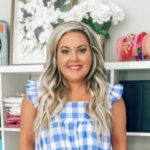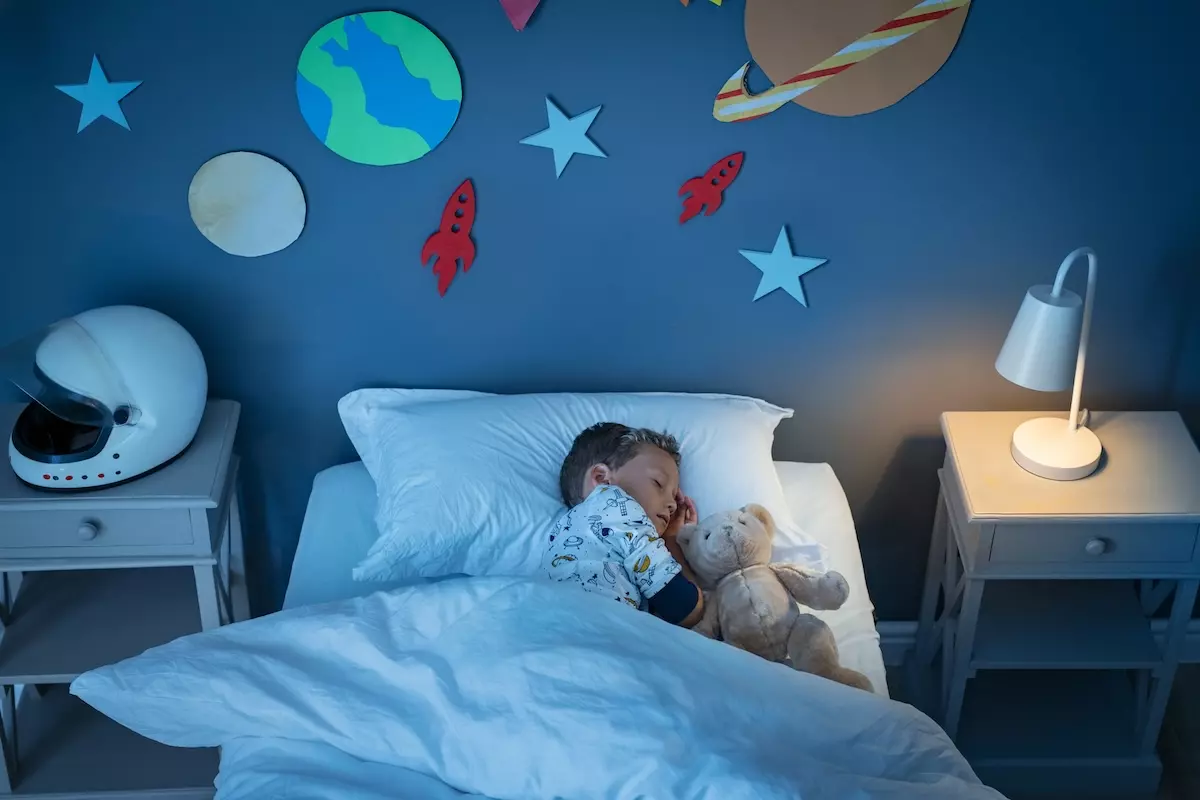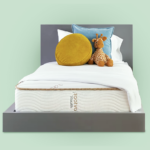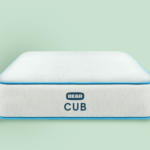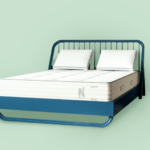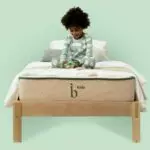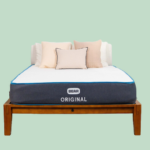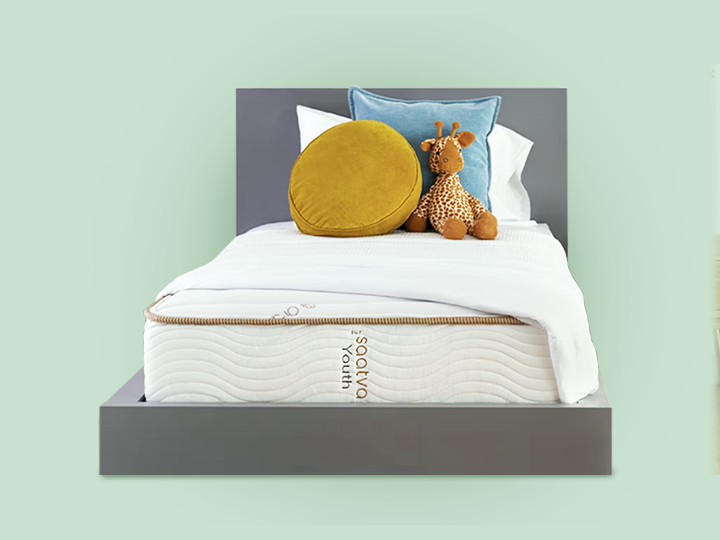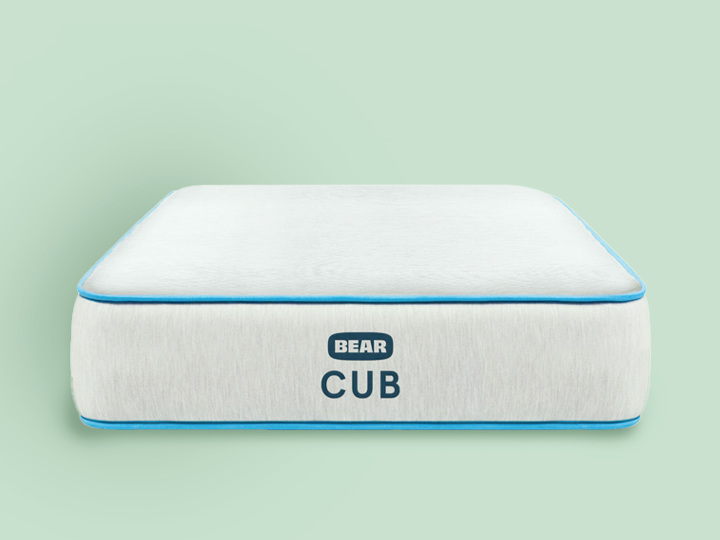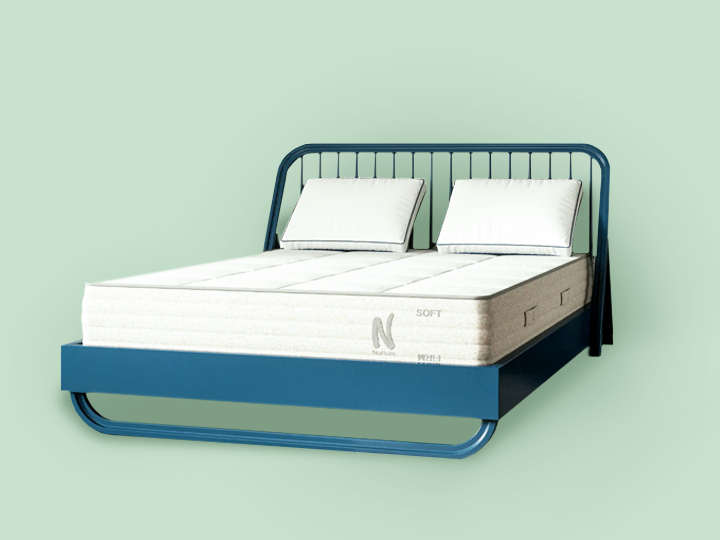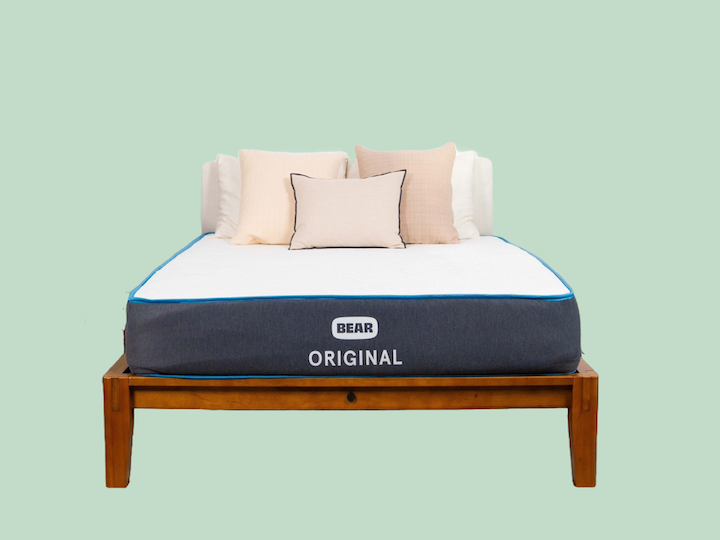Table of Contents
- We spent over 1,000 hours researching and testing the top mattresses on the market and consulting with 21 sleep experts to compile our recommendations.
- Our testers evaluated over 100 models and recorded our findings on a 42-question standardized testing form to identify standout features and services, document issues with each product, and describe our personal experience lying on each mattress.
- We paid close attention to specific considerations that sleepers of all ages seek, as identified by respondents in our survey of 600 mattress owners. This included price, features, and the set-up process.
- The best mattress for kids is one that is supportive and comfortable, promoting a good night’s sleep. Adequate sleep is so important for kids, setting them up for a good day by supporting their physical and mental health.
Learn more about how we tested mattresses for kids.
Key takeaways
- The Saatva Youth is our pick for the best mattress for kids overall because it is a dual-sided mattress offering both medium-firm and medium-soft support, meeting kids where they are in their development.
- Based on over 1,000 hours of testing and our survey of 600 mattress owners, we found that young kids need firmer mattresses, while older children are most comfortable in medium-soft beds that provide ample pressure relief for their growing and active bodies.
- Mattresses for kids can cost around $695 to over $1,690. Factors impacting price include the mattress’s size, construction, and materials.
When you tuck your child into bed for the night, you may have to pull out all the stops to help them fall asleep, from white noise machines to stacks of bedtime stories. While sleep routines and relaxing environments are important, you may be overlooking one critical factor to quality sleep—your child’s mattress.
The best mattress for kids promotes good quality sleep, which plays a big role in a child’s learning, memory formation, emotional regulation, and physical and mental health. Poor or lack of sleep can lead to mental health and behavioral challenges, including stress, depression, anxiety, and aggressive behaviors.
We selected mattresses that are both comfortable and supportive enough for a child. As part of our selection process, we interviewed pediatric sleep experts and consulted with parents about the important qualities to look for in a mattress for children. Our top mattress picks are safe, made from non-toxic materials, supportive, and durable enough to last throughout childhood. Find out which mattress can help your little one have their best night’s sleep.
6 best mattresses for kids of 2024
- Best mattress for kids overall: Saatva Youth
- Best twin mattress for kids: Bear Cub
- Best full-size mattress for kids: Nolah Nurture Kids
- Best organic mattress for kids: Birch Kids Natural
- Best memory foam mattress for kids: Bear Original
- Best hybrid mattress for kids: Helix Kids
Best mattress for kids overall: Saatva Youth
Why Saatva Youth is our pick for best overall
Saatva Youth’s dual-sided mattress is our pick for the best overall mattress for kids because it was built to last into their preteen years. The soft side offers flexibility and spinal support for children ages 3-7, while the medium-firm side provides spinal alignment for children ages 8-12. The Saatva Youth mattress is made from natural, non-toxic materials, and delivery is simple and convenient.
Who should consider the Saatva Youth: As a two-sided mattress, Saatva Youth can be flipped to offer medium-firm or medium-soft support, making it an excellent fit for families looking for a model that will last their child from preschool to preteen.
Who should consider other options: This mattress isn’t available in a king or queen-size option, so it may not be a good fit for teens or children sharing a bed with a pet.
Saatva Youth tester insights
The Saatva Youth mattress is made from natural, non-toxic materials and has a flippable design meant to provide your child the proper support and comfort as they grow. The first side is designed for kids ages three to seven. It has a support foam layer that helps maintain proper spinal alignment, which is crucial for growing kids. The dual-sided coils provide flexibility that make it easy for your child to move around on the mattress. The other side is designed for children ages eight to 12. It has high-density comfort foam, making it both softer and cooler. In addition, the softer side of the Saatva Youth mattress still maintains proper spinal alignment by enhancing support in the center third of the mattress, where an older child’s body weight is concentrated.
When selecting a mattress for children, prioritize quality, support, comfort, and safety. Therefore, it is a worthwhile investment to purchase a good quality mattress than getting one that is old and used.
Debbie Gerken, a registered NICU nurse and certified pediatric sleep coach.
One of the best perks of the Saatva Youth is the convenience. Not only is this bed designed to adapt to your child’s growth, but it also comes with free white glove delivery. Saatva will personally set up your new mattress and remove your child’s old one (if they have one) for no additional cost. The Saatva Youth is the only mattress in this review offering this service for free.
One downside is this is the only mattress reviewed here that isn’t certified GREENGUARD Gold Certifies that a product has low chemical emissions to reduce indoor air pollution and lower the risk of chemical exposure . However, it’s still made with eco-friendly and non-toxic materials.
To learn more about Saatva, read our Saatva review.
Best twin mattress for kids: Bear Cub
Why Bear Cub is our pick for best twin mattress
The Bear Cub mattress is one of our top choices for kids due to its hypoallergenic cover, responsive foam, and clean materials. It can support sleepers up to 150 pounds, so it’s built to support most children into their teen years.
Who should consider the Bear Cub: Children with allergies or sensitivities to chemicals will benefit from the Bear Cub mattress’s hypoallergenic cover.
Who should consider other options: White glove delivery and old mattress removal come with an added cost of $175, so it might not be the best fit for someone who needs help setting up their new bed and removing their old mattress.
Bear Cub tester insights
The Bear Cub is a hybrid mattress combining memory foam, responsive foam, and coils. We chose this mattress as the best twin mattress for kids because of the reinforced coils surrounding the edge. Since twin mattresses have the smallest surface area, you might worry more about your child rolling off a twin mattress than if you had a full or larger mattress. With the Bear Cub, the reinforced coils provide additional stability to cradle your child toward the center of the bed and reduce the chances of rolling off.
The edge support can provide a sense of comfort for children as they can freely move about their sleep space without feeling like they will roll off the edge. In addition, edge support adds to the durability and overall longevity of the mattress as it tends to reduce sagging with heavier activity over time.
Debbie Gerken, a registered NICU nurse and certified pediatric sleep coach.
The Bear Cub is made of allergen-free and fiberglass-free material. The foam in this mattress, and all of the mattresses in this review, are CertiPUR-US certified CertiPUR-US is a certification that shows the foam in the mattress has been crafted with no ozone depleters. so you know you will receive a mattress with quality foam that meets certain standards for durability, emissions, and content.
The cost of having the mattress installed and an old one removed is an additional $175, while the cost of mattress removal only is $100.
Learn more in our Bear review.
Best full-size mattress for kids: Nolah Nurture
Why Nolah Nurture is our pick for best full-size mattress
We chose the Nolah Nurture Kids mattress as the best full mattress for kids because the two-sided design is meant to be durable and last your child into their preteen years, so you won’t have to keep purchasing new mattresses as they age.
Who should consider the Nolah Nurture: Because Nolah uses organic and natural materials, it is a great fit for children with allergies or chemical sensitivities.
Who should consider other options: Nolah charges $99 for returns, even if they are made within the 120-night sleep trial, so this mattress might not be a good fit if you’re uncertain if it will work for your child.
Nolah Nurture tester insights
A key feature of the Nolah Nurture mattress is its limited lifetime warranty. For only $0.99, you can add a 10-year protection plan to your mattress purchase. The Mulberry Protection Plan covers common accidents from children or pets, including rips, burns, punctures, and more.
The Nolah Nurture is made from organic cotton, which is designed to protect against allergens and moisture. You don’t need a specific foundation for this mattress; it’s compatible with any type of bed frame, including box springs, slatted bases, and adjustable bases. Unlike Saatva, Nolah doesn’t recommend a specific age for either side of the mattress. Since every child is different, you and your child can determine when to flip the mattress.
Despite Nolah Nurture’s 120-night sleep trial, you will have to pay a $99 return fee if you return your mattress within that time period. Although this is a significant downside, we feel the affordable accident protection plan makes up for this fee.
Learn more in our Nolah mattress review.
Best organic mattress for kids: Birch Kids Natural
Why Birch Kids Natural is our pick for best organic mattress
Natural and organic mattresses go the extra mile for children’s safety. The Birch Kids Natural mattress is organic, fire retardant, and made from hypoallergenic wool and natural latex. With this mattress, you won’t find chemicals or polyurethane foams.
Who should consider the Birch Kids Natural: Because of the presence of natural materials, this mattress has good cooling capabilities and would work well for children who tend to run hot.
Who should consider other options: Birch uses wool as one of the natural materials in this mattress, so it isn’t a great fit for children with wool allergies or sensitivities.
Birch Kids Natural tester insights
The Birch Kids Natural mattress is one of our top picks because it provides the safety of natural and organic materials and the longevity of a dual-sided mattress. Like many mattresses here, this mattress in a box is designed to last your child into their preteen years since you can flip it when they are ready for something softer. The mattress cover is made from soft organic cotton. Inside, the plush wool is fire retardant and designed to prevent allergens from building up. The natural latex material is also designed to make the mattress supportive, comfortable, and breathable. However, if your child is allergic to wool, you should talk to their doctor before purchasing.
When testing the adult version of this mattress, it showed good responsiveness, which is ideal for kids who tend to move around during sleep more than adults do.
From one of our Birch Kids Natural testers:
“When I rolled around, the material responded well to movement. The springiness of the mattress made it easy to switch positions.”
The Birch Kids Natural mattress comes with a 25-year warranty. Although it isn’t quite as good as a lifetime warranty, it is longer than most. Birch Kids also offers white glove delivery for an additional cost. For mattress removal only, the cost is $119, while in-home setup and mattress removal costs $159. You can also pay a little more if you want them to remove or set up an adjustable base or other foundations.
The brand also offers a 10-year accident protection plan, but unlike Nolah’s affordable price, theirs costs $79 for a twin and $99 for a full bed. However, the trial period is less appealing than others on this list. You can test out the mattress for 100 days, and if you want to return it within that time period, you will have to pay a $99 return fee.
Best memory foam mattress for kids: Bear Original
Why Bear Original is our pick for best memory foam
The Bear Original mattress isn’t specifically designed for kids, but since it’s made from memory foam, its firmness is ideal for growing children. The cost is relatively low, and you could purchase a queen or king mattress big enough to support them into their teenage years and beyond.
Who should consider the Bear Original: A twin-size Bear Original mattress is affordable at $699, so it is a good fit for families shopping on a budget.
Who should consider other options: Children or preteens with pain, whether it is from growth, participation in sports, or a medical issue, may find the Bear Original doesn’t provide enough pressure relief.
Bear Original tester insights
The Handbook Team was most surprised by how well the Bear Original performed in responsiveness. Usually, memory foam mattresses cause the sleeper to feel more “stuck in” the mattress rather than resting on top of it. The sinking feeling can make it difficult to change sleeping positions. However, our tester didn’t feel stuck at all. In fact, it was easy for her to move around and reposition herself. As a result, your child shouldn’t have any trouble moving around and readjusting as well.
This organic mattress is made from non-toxic materials that are fiberglass-free and GREENGUARD Gold Certified.
From one of our Bear Original testers:
“I felt like the mattress was really easy to move around on. I didn’t feel like I was fighting the material to move.”
The one downside is the warmth of memory foam. To learn more, we asked NICU nurse and pediatric sleep coach Debbie Gerken about memory foam mattresses for children. “Memory foam mattresses are not as breathable as other mattresses. Therefore, they can retain more heat, which can cause sleep disturbances if a child becomes too warm,” says Gerken.
While this is true, our tester found that the Bear Original performed well in cooling. She recorded the temperature with a thermal gun A tool that uses thermal imaging to measure how quickly the bed’s surface heats up after someone lays in it. before lying on the mattress and after lying on it for five minutes. The temperature only increased by 7.5 degrees Fahrenheit. The cooling capabilities are likely due to the Tencel A brand of sustainable cellulose fiber made from wood pulp, which is used in clothing, footwear, home linens, carpets, mattresses, and pillows because it’s highly breathable, hygienic, and comfortable. cover. Tencel is a material that is known for being breathable and moisture-resistant.
Best hybrid mattress for kids: Helix Kids
Why Helix Kids is our pick for best hybrid
The Helix Kids mattress is an excellent choice for parents who are looking for a durable, hypoallergenic mattress made from clean, non-toxic materials. It’s also water repellent, which is crucial for any child who is potty training.
Who should consider the Helix Kids: As a water-repellant mattress, the Helix Kids is a great fit for potty-training children or deep sleepers who have accidents at night.
Who should consider other options: Helix doesn’t recommend this mattress for kids over the age of 12, so it won’t last families beyond their kid’s elementary years.
Helix Kids tester insights
The Helix Kids mattress also offers two firmness levels, one on each side, so you can flip it as your child grows and needs a softer mattress. Helix recommends the firmer side for ages three to seven and the softer side for ages eight to 12. However, since every child is different, you and your child should decide when to flip the mattress. The mattress cover is hypoallergenic and made with Tencel, a water-repellent finish, and a hygienic microbe shield that fights odors.
From one of our Helix Kids testers:
“The foam is very responsive, so it was easy to move around on.”
One of the downsides of the Helix Kids mattress is that the warranty and trial period are shorter than other mattresses featured in this review. However, you do have 100 days to test out the mattress, and if you want to return it, you can do so free of charge. Some mattress companies will charge you a return fee, so it’s great to have the peace of mind that you have time to test it out and return it without any risk.
Learn more about Helix in our Helix review.
How we test and choose the best mattresses for kids
Adequate sleep is one of the most important factors in children’s health, according to the American Academy of Pediatrics, playing a role in protecting their mental health, supporting their learning in school, and promoting healthy growth and development. Knowing that a good mattress is one way parents can support their child’s sleep, we have dedicated extensive time and effort to researching the best mattress for kids. Our Reviews Team spent over 1,000 hours researching more than 100 models before testing every model we include in our reviews. We also surveyed more than 600 mattress owners while consulting with experts on what is most important in a new mattress for kids.
Children are incredibly resilient. But as they grow and play, they need a comfortable and safe space to sleep and recover. I like how many kids’ mattresses on the market have flippable designs, which provide built-in variability with age or inevitable bumps and bruises. Not every kid needs this feature for comfort, but it’s a nice touch to complement development.
Nicole Hernandez, DPT

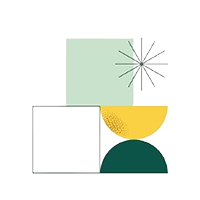

First-hand testing experience
Our testers set up each mattress we review in our testing lab for hands-on experience, using a standardized 42-question testing form to evaluate each model across the categories we have found most important in mattresses for kids. For example, growing children have different needs depending on their development, so we tested the firmness of each model to give caregivers an accurate understanding of the support provided by each mattress.
Mattress surveys & interviews
We surveyed over 600 mattress owners, specifically noting what is most important to families seeking a mattress for their kids. This included considerations surrounding price, features, and the set-up process. We also interviewed real people to better understand the motivations behind shopping for a new mattress as well as the benefits of purchasing one.
Objective and honest ratings
Each person has a unique set of personal preferences that changes what they need from a mattress to get a comfortable night’s sleep. Still, there are some things we have found to be generally true about what is important in a quality and supportive bed.
Based on the information we gathered from surveys and interviews, we determined which features are most important to mattress owners and developed a mattress scorecard rating each of those features. Then we used those scores to create one, overall weighted score for each model. In order to be included in this round-up of the best kids mattress, each mattress needed to have a minimum score of 8/10.
| Factor | Weight | Description |
|---|---|---|
| Customer Service | 15% | Customer care center hours, support options |
| Brand Reputation | 10% | Years in business, lawsuits & class actions against this company |
| Features | 20% | Size options, firmness options, weight capacity, add-ons included (free sleep accessories) |
| User Experience | 35% | White glove delivery, CERTIPUR-US certifications, risk-free trials |
| Affordability | 20% | Price, warranty, promotions |
Learn more about our mattress testing and review methodology.
Our kids mattress testing process
How to choose the best mattress for your kid
Choosing a mattress for a child is a little different than choosing one for an adult. While details like mattress type and firmness, material choice, and cooling elements should all be considered, it’s important to factor in the changes that can be expected from a growing child over a relatively short time frame.
Mattresses designed specifically for kids are ideal for a comfortable sleep environment and to support a child’s physical growth. “Since children’s bodies are growing and developing, it is important to make sure that the mattress has a firm surface that provides the support needed for healthy spinal alignment,” says Debbie Gerken, a registered Neonatal Intensive Care Unit (NICU) nurse and certified pediatric sleep coach.
Mattress type
Mattresses come in different constructions and types; some may be better suited to children than others.
Foam
All-foam mattresses are made with multiple layers of polyfoam or memory foam to deliver comfort and support. While memory foam distributes body weight evenly to minimize pressure point pain, it’s prone to retaining heat—something to keep in mind with kids, in particular.
Hybrid
Hybrid mattresses combine comfort layers made from foam or latex with a coil system for targeted support. Many experts recommend hybrid mattresses for kids. They’re not as bouncy as innerspring options and they have better edge support and air circulation than all-foam mattresses.
Innerspring
Innerspring mattresses are similar to hybrids in that they combine foam or latex with springs. But the ratio of springs is different, giving the best innerspring mattresses a bouncier, more traditional mattress feel. It’s not a bad option for kids—these mattresses tend to be inexpensive—but be mindful if you have a child who will use the bed as a trampoline.
Mattress firmness
Mattress firmness is largely influenced by body weight. The more weight a sleeper has, the deeper they sink into a mattress and the softer it feels. For kids, a medium-firm or firm mattress tends to be best to ensure comfortable spinal support in developing bodies.
Sensitivities and allergies
When new, materials like memory foam are prone to off-gassing. They also increase exposure to volatile organic compounds (VOC). Hybrid mattresses can help minimize this exposure for children with allergies or sensitivities. It’s also helpful to look for mattresses made with hypoallergenic or certified organic materials.
Cooling features
Hybrid and innerspring mattresses naturally encourage air circulation, unlike all-foam mattresses that can trap body heat. If you have a child who runs warm at night, a mattress that circulates air well is an important consideration to avoid nighttime disturbances. Temperature-regulating materials like latex, cotton, and wool can also be great features in a cooling mattress.
How to tell your child may need a new mattress
Ensuring your child has a comfortable and supportive mattress is important, but it’s not always easy to know when it’s time for an upgrade. Watch for these signs to know when your child needs a new mattress:.
- Your child has grown out of their bed. Kids grow out of almost everything sooner or later, including their beds. If they’re too big or heavy for their current mattress, it’s important to get one that will support them properly. Most children do just fine in a twin-size bed, while a twin XL will give them five extra inches of room to grow! For some kids, a queen mattress can be a great size through high school, but most don’t need the extra space from a king mattress.
- Your child is not comfortable in their bed. A mattress that’s not spacious or supportive enough will affect your child’s comfort level, too. Remember that mattresses made for younger kids likely won’t have the necessary support for older kids—a key component of a comfortable mattress at any age.
- Your child’s bed is visibly in need of replacement. Visible signs of damage, like sagging, creaky springs, or rips and tears, indicate that the mattress is due for replacement.
- You’ve owned your child’s bed for a long time. Hand-me-downs can save money, but a used mattress may not be the best fit for your child’s needs. Fortunately, there are affordable mattresses that work for a range of sleep styles and preferences.
Our final verdict
Our overall pick for the best kids mattress is the Saatva Youth mattress because it is an innerspring, dual-sided model that will work well for children from preschool to middle school. During testing, we found the softer side to offer true medium-soft support, rating it at a 5 out 10 on firmness scale, while the firmer side we found to offer true medium-firm support, rating at 7 out 10 on the firmness scale.
We appreciate that Saatva prioritizes natural and organic materials in their kids’ mattresses. Because of this, the Saatva Youth is a good fit for children with allergies or who are sensitive to chemicals. Saatva is one of the more expensive models on this list, costing $795 for a twin-size mattress.
Saatva has industry leading policies, offering a lifetime warranty with each new mattress as well as a 365-night sleep trial. Each mattress purchased also includes free white glove delivery.
Compare the best mattresses for kids of 2024
|
Saatva Youth
Check price
|
Bear Cub
Check price
|
Nolah Nurture
Check price
|
Birch Kids Natural
Check price
|
Bear Original
Check price
|
Helix Kids
Check price
|
|
|---|---|---|---|---|---|---|
| Price | $795–$1,055 | $695–$845 | $919–$1,224 | $1,123–$1,373 | $786–$1,690 | $748–$998 |
| Firmness | 6/10–7/10 (firm side); 5/10 (soft side) | 6.8/10 | 4/10–5/10 (soft side); 6/10–7/10 (firm side) | 4/10–5/10 (soft side), 6/10–7/10 (firm side) | 8/10 | 4/10–5/10 (soft side), 6/10–7/10 (firm side) |
| Material | Innerspring | Hybrid | Hybrid | Hybrid | Foam | Hybrid |
| Warranty | Lifetime | Lifetime | Lifetime | 25 years | Lifetime | 10 years |
| Trial period | 365 nights | 120 nights | 120 nights | 100 nights | 120 nights | 100 nights |
| Best for | Spinal support, durability, and customer service | Edge support and stability in a twin mattress | Lasting comfort and durability as kids grow | Organic, hypoallergenic materials | Staying cool while providing comfort to back and side sleepers | Combination sleepers and potty training children |
Frequently asked questions
We found the best mattress for kids is the Saatva Youth mattress. It’s made from safe, non-toxic materials and is designed specifically for growing kids to last into their preteen years. But each mattress has different components and features, so you should choose a mattress for your child based on their age, weight, and personal preferences.
Kids need a mattress with enough support to promote healthy spine alignment. When they’re younger and growing, a firmer mattress is necessary to provide that support, and as they get older, they can transition into something slightly softer that still offers significant support as they continue to grow.
The size of your kid’s mattress is all about preference. Some parents may want a larger mattress that can last through their child’s preteen years, while others may want a twin size to fit a small room or a bunk bed.
When your child is young, they may need a medium-firm mattress somewhere between six or eight out of 10 on the firmness scale. As they get older, they can transition to something softer with more give as they change sleeping positions.
When mattress shopping for kids, you should be wary of any mattress that is too soft. If your child sinks into the mattress, it likely won’t have enough support for them. Additionally, you should avoid getting a used mattress since it can sag and lose support over time.
- Gehrman, E. (2022). A Child’s Need for Sleep. Harvard Medicine. Link
- Kids’ Sleep Linked to Brain Health. News in Health. Link
- Scott, A.J., Webb, T.L., Martyn-St James, M., Rowse, G., & Weich, S. (2021). Improving sleep quality leads to better mental health: A meta-analysis of randomised controlled trials. Sleep Medicine Reviews, 60, 101556. Link
- De Koninck, J., Lorrain, D., & Gagnon, P. (1992). Sleep positions and position shifts in five age groups: an ontogenetic picture. SLEEP, 15(2), 143–149. Link

